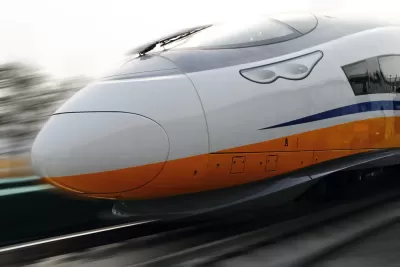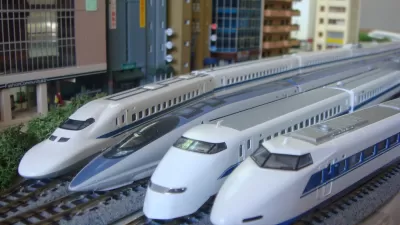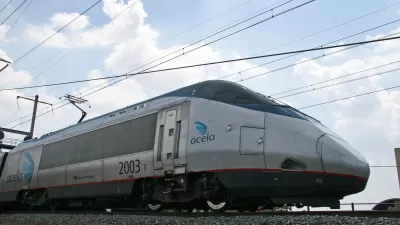High-speed rail advocates in the Pacific Northwest are pushing for a high-speed link between Vancouver, Seattle, and Portland to be part of future economic stimulus spending in the United States.

Martin Brosnan writes to anticipate and plan for economic recovery, returning to an idea that figured in the economic recovery plan for the previous recession, yet without much to show for it: high-speed rail.
After dispensing with the idea of repeating the mistakes of the country's history of car-centric economic stimulus spending, Brosnan suggests high-speed rail as a desirable approach to an infrastructure related economic stimulus:
High-speed rail, however, may be the way to go. A high-speed rail line from Portland, Oregon to Vancouver, British Columbia is the perfect project to provide hundreds of short- and long-term employment opportunities, stimulate the economy of one of North America’s top 10 most populated mega-regions, foster increased cooperation between the two nations post border-closure, and to help move people through the region and to new employment opportunities in an economy that may result in fewer people being able to afford personal vehicles. Looking back at the conception of the highway system, it seems to be the right time to invest in such a project–to accommodate large, and growing urban populations, create jobs and economic growth, and cut transportation costs.
As noted by Brosnan, some of the planning and political ground has already been cleared for a high-speed rail connection in Cascadia. There's also gathering political support federal high-speed rail spending from House Rep. Seth Moulton (D-Mass.), who has proposed a bill (complete with supplementary white paper) that would spend $250 million on high-speed rail as a form of economic relief in the wake of the pandemic. The Green New Deal would also support a shift in federal transportation policy toward rail, away from air and car travel.
FULL STORY: Should The Government Invest in High-Speed Rail to Boost a Post-Pandemic Economic Recovery?

Study: Maui’s Plan to Convert Vacation Rentals to Long-Term Housing Could Cause Nearly $1 Billion Economic Loss
The plan would reduce visitor accommodation by 25,% resulting in 1,900 jobs lost.

North Texas Transit Leaders Tout Benefits of TOD for Growing Region
At a summit focused on transit-oriented development, policymakers discussed how North Texas’ expanded light rail system can serve as a tool for economic growth.

Why Should We Subsidize Public Transportation?
Many public transit agencies face financial stress due to rising costs, declining fare revenue, and declining subsidies. Transit advocates must provide a strong business case for increasing public transit funding.

How Community Science Connects People, Parks, and Biodiversity
Community science engages people of all backgrounds in documenting local biodiversity, strengthening connections to nature, and contributing to global efforts like the City Nature Challenge to build a more inclusive and resilient future.

Alabama: Trump Terminates Settlements for Black Communities Harmed By Raw Sewage
Trump deemed the landmark civil rights agreement “illegal DEI and environmental justice policy.”

Dear Tesla Driver: “It’s not You, It’s Him.”
Amidst a booming bumper sticker industry, one writer offers solace to those asking, “Does this car make me look fascist?”
Urban Design for Planners 1: Software Tools
This six-course series explores essential urban design concepts using open source software and equips planners with the tools they need to participate fully in the urban design process.
Planning for Universal Design
Learn the tools for implementing Universal Design in planning regulations.
City of Santa Clarita
Ascent Environmental
Institute for Housing and Urban Development Studies (IHS)
City of Grandview
Harvard GSD Executive Education
Toledo-Lucas County Plan Commissions
Salt Lake City
NYU Wagner Graduate School of Public Service





























